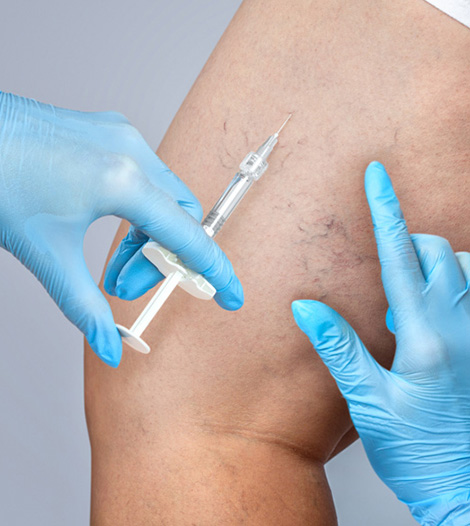Procedures
Endoscopic Sclerotherapy (EST)
- Sclerotherapy for esophageal varices involves injecting a strong and irritating solution (a sclerosant) into the veins and/or the area beside the distended vein. Sclerosant injected directly into the vein causes blood clots to form and stops the bleeding, while sclerosant injected into the area beside the distended vein stops the bleeding by thickening and swelling the vein to compress the blood vessel.
- Sclerotherapy for esophageal varices is performed with the patient awake but sedated. During the procedure, an endoscope is passed through the patient’s mouth to the esophagus to allow the surgeon to view the inside. The branches of the blood vessels at or just above where the stomach and esophagus come together, the usual site of variceal bleeding, are located.
- After the bleeding vein is identified, a long, flexible sclerotherapy needle is passed through the endoscope. When the tip of the needle’s sheath is in place, the needle is advanced, and the sclerosant is injected into the vein or the surrounding area. The most commonly used sclerosants are ethanolamine and sodium tetradecyl sulfate. The needle is withdrawn. The procedure is repeated as many times as necessary to eradicate all distended veins.
- Minor complications, which cause discomfort but do not require active treatment or prolonged hospitalization, include transient chest pain, difficulty swallowing, and fever, which usually go away after a few days. Some patients may have allergic reactions to the sclerosant solution. Infection occurs in up to 50% of cases. In 2-10% of patients, the esophagus tightens, but this complication can usually be treated with dilatation. More serious complications may occur in 10-15% of patients. These include perforation or bleeding of the esophagus and lung problems, such as aspiration pneumonia. Long-term sclerotherapy can also damage the esophagus and increase the patient’s risk of developing cancer.
- Sclerotherapy for esophageal varices has a 20-40% incidence of complications and a 1–2% mortality rate. The procedure controls acute bleeding in about 90% of patients, but it may have to be repeated within the first 48 hours to achieve this success rate.


Patient preparation for the procedure
Preparation for EST is fasting for 4-6 hours similar to performing a regular esophagogastroduodenoscopy (EGD). An intravenous line is placed to deliver sedation or other medications.

Dr. Kunal Das
Book an Appointment
Ready to take the first step towards better digestive health?
Schedule your appointment with Dr. Kunal Das today. With convenient booking options, personalized consultations, and compassionate care, we’re here to support you on your journey to optimal wellness.

